Aston Martin DB5

Initially released in 1963, the Aston Martin DB5 is a British luxury grand tourer that is the most recognized James Bond car. The DB5 appeared in both Goldfinger and Thunderball. The DB5 is considered the car of the James Bond franchise.
Jaguar E-Type

Released in 1961, the E-Type was one of the fastest cars on the road while it toted a price tag that was only a fraction of other foreign luxury brands. Enzo Ferrari even called the E-Type the most beautiful car he’d ever seen, which is saying something.
Ford GT40
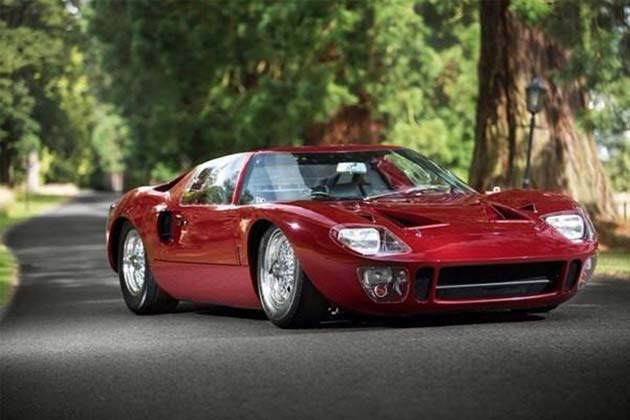
Produced between 1964 and 1969, this high-performance race car is one of the rarest cars in the world, with only 105 ever being made. The car made history in the racing world, winning the 24 Hours of Le Mans four years in a row (1966-1969). Not to mention its first victory in 1966 marked the first victory for an American car manufacturer at a major European race since 1921. These accomplishments are what makes it so iconic.
Chevrolet Corvette 427 Stingray
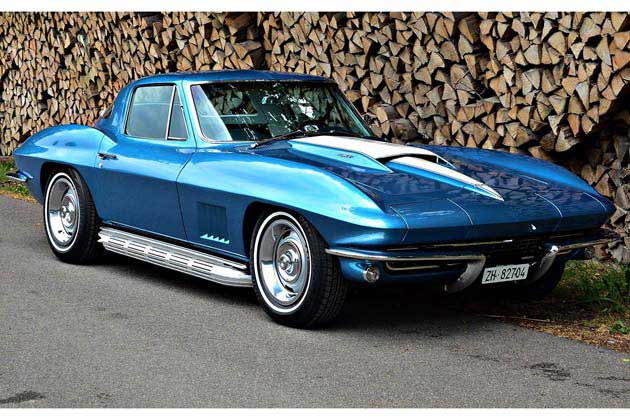
Hailed by many car fanatics as the most iconic American sports car of all time, it’s not hard to understand why this car lands on this list. The Stingray was one of the only cars that could keep up with the Shelby Cobra (the other being the ‘63 Split-Window Corvette).
Ford Mustang

The original pony car. One of the most well-known and recognizable muscle cars of all time, the Mustang is hailed as the single most iconic American car of the ‘60s. The Mustang created a brand new market that gave rise to competitors like the Chevy Camaro, Plymouth Barracuda, Pontiac Firebird, and so many more. The Mustang was also the first car to win the Tiffany Gold Medal for Excellence in American Design.
Chevrolet Camaro
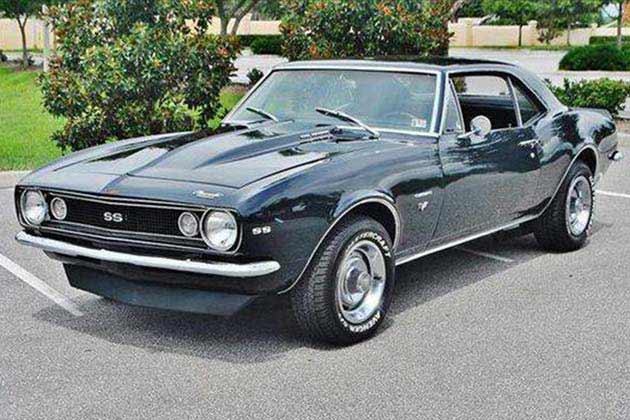
Not quite as popular as the Mustang, the Chevy Camaro is still considered an incredibly iconic muscle car of the ‘60s and beyond. The Camaro emerged while the country was smack dab in the middle of muscle car craze, and it offered big block power right from the start. It took a while, but eventually, the Camaro’s sale numbers eclipsed even the Mustangs.
Volkswagen Beetle
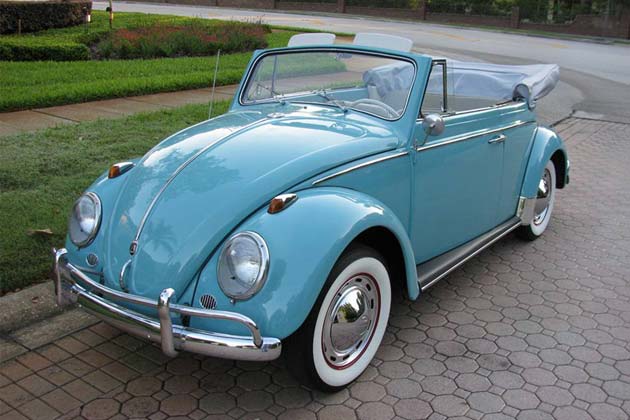
Commonly known as the bug, this little car easily has one of the longest lifespans of any car in history. The bug was a small, cheap, reliable, and air-cooled car that paved the way for German luxury brands like BMW and Mercedes. It may not have been the fastest or the strongest car, but it’s easily memorable, which lands it on this list.
Volkswagen Type 2

The Volkswagen Microbus (aka the Type 2) can be one of two things: a really big van or a very small bus. The Type 2 became the stereotypical hippie van and was the symbol of the rebellious hippie movement in the ‘60s. Even now, Type 2 remains a popular car for modern-day hippies.
Lincoln Continental
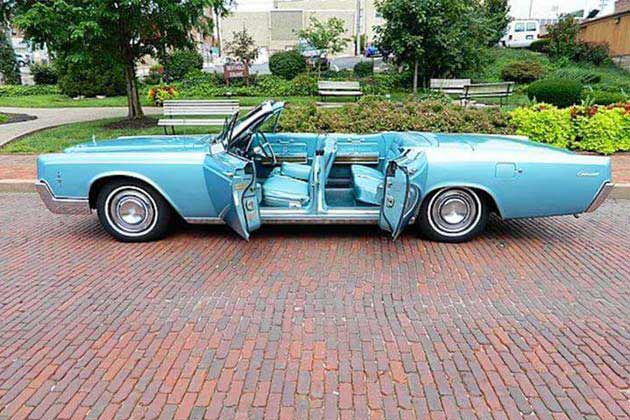
The only car on this list that could give the VW Beetle a run for its money as far as production lifetime goes. The Continental was introduced in 1939, and its fourth generation reigned in the ‘60s. The ‘60s Continental came with the famous rear-hinged “suicide doors” and a luxurious internal and external appearance. Though this car will forever live in infamy as the car that President Kennedy was assassinated in back in 1963.
Plymouth Barracuda

This car was designed solely to compete against the Ford Mustang in the insanely competitive muscle car market of the ‘60s. Most known for its gorgeous wrap-around curved window was a strong competitor in the muscle car market. Sleek and powerful, ‘Cuda remains popular among muscle car enthusiasts even to this day.
Chevrolet Chevelle
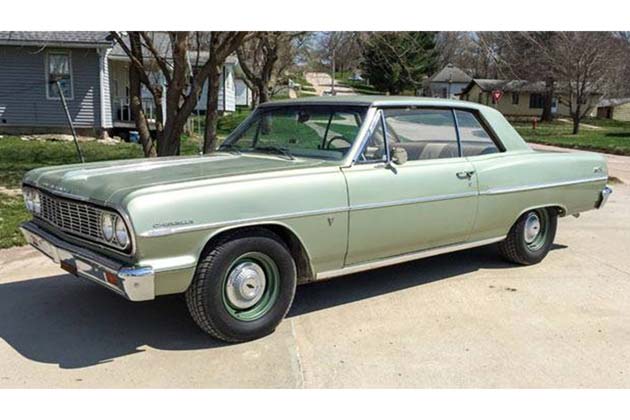
Not quite as popular as, say, the Corvette or the Camaro during their heyday, the Chevelle was still a highly sought-after car and was still incredibly successful. During the Chevelle’s heyday, it was easily one of Chevy’s most successful cars, and it easily attracted those hit with the muscle car craze.
Pontiac GTO
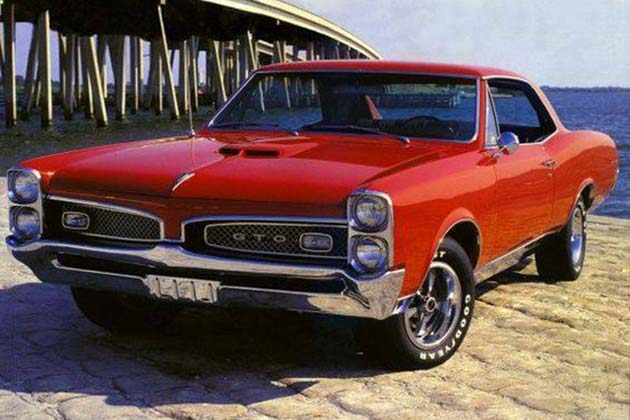
The car that pushed competitors to up their game, the GTO was a mean and lean machine. Considered the first muscle car by many, the GTO led the pack. The ‘coke bottle’ look with kicked up rear fenders on the 1966 model was a major hit among GTO buyers. Strong, fast, and mean, the GTO was a massive hit during the muscle car craze and is still highly sought-after by collectors today.
Ford Thunderbird
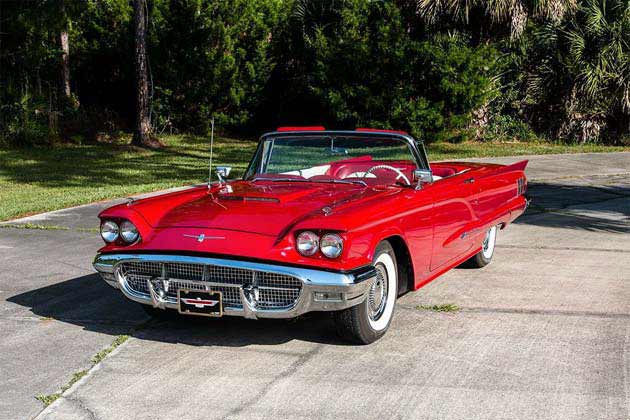
Ford wasn’t just catering to the muscle car trend, and the insanely successful Thunderbird luxury car is proof of that. The Thunderbird created a whole new market niche that we now know as the “personal luxury car.” Cars like the Buick Riviera and Cadillac Eldorado rose to compete, but never quite reached the same level as the Thunderbird.
Dodge Charger
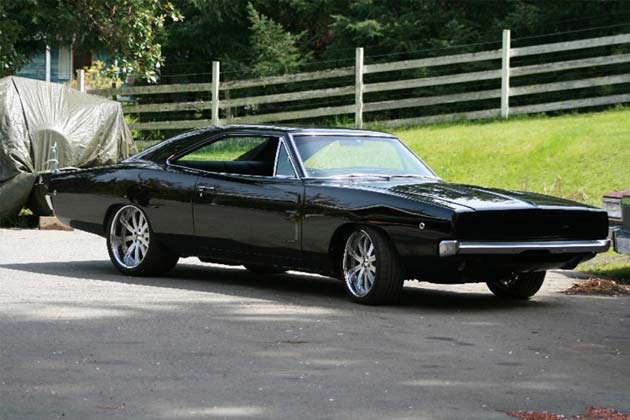
Considered to have one of the cleanest muscle car designs of the time, the 1968 Dodge Charger was easily one of the most loved muscle cars out there. Not to mention the car found a spot in movie history in Steve McQueen’s Bullitt, being a part of one of the most memorable car chase scenes ever. It is now in its final year of production.
Ford Torino

The amount of muscle cars that spawned in the late ‘60s almost seems never-ending, and here’s another one for the list. Released in 1968, the Torino was a redesigned version of the Ford Fairlane that had been produced earlier. The Fairlane was a nice car, but it didn’t resonate quite as much with muscle car buyers as competitors. So, Ford rebranded it, making it bigger and badder with a new name.
Plymouth Roadrunner
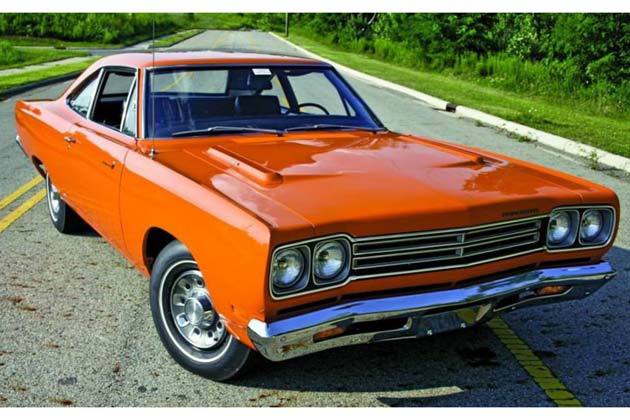
The Roadrunner was introduced in 1968, and by 1969, it was named Motor Trend’s Car of the Year. Plymouth even managed to cut a deal with Warner Brothers to use their Roadrunner character design for the logo on the car. Think we’ll ever get more cars named after cartoon characters?
Dodge Dart Swinger
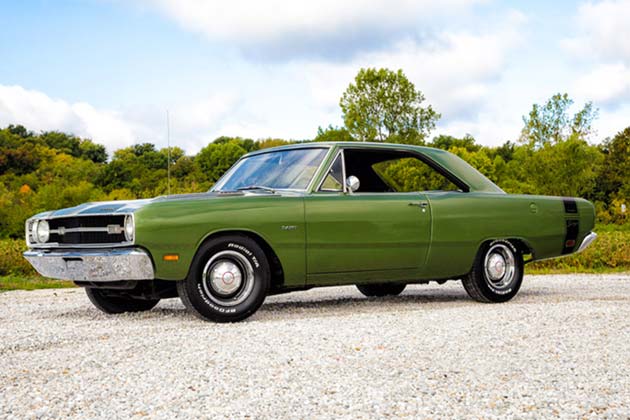
Released as an upscale version of the Dodge Dart in 1969, it started out as the cheapest two-door model on the market. The Swinger 340 became a popular, hefty muscle machine that rounded out the ‘60s muscle car era. Two years after its release, Dodge released the Demon to replace it.
Lotus Elan
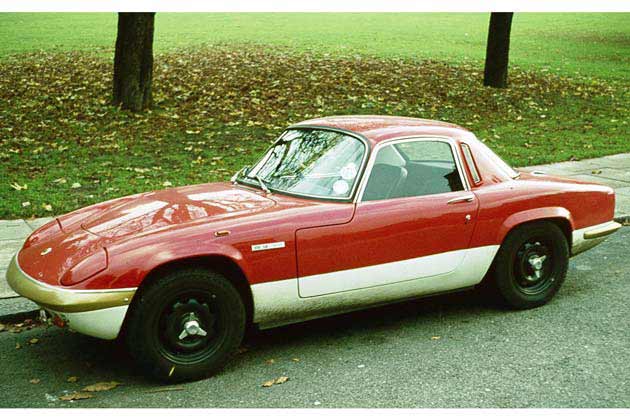
While muscle cars were booming in America, British car makers were also having a kind of renaissance of their own. The Lotus was a small, lightweight, and fast sports car that was as unapologetically curvy as the roads it drove. While American cars of this time were over-the-top and focusing on looking high powered, the Lotus was focused on attractive minimalism.
Alfa Romeo Spider

Launched in early 1966, this successor to the Giulia Spider remained in production for almost three decades with only minor changes across that time. This car looked fast even when it was parked thanks to its steep windshield and rounded out nose. People loved this speedy little Italian roadster. This car also found movie fame in the 1967 hit movie The Graduate.
Maserati Ghibli
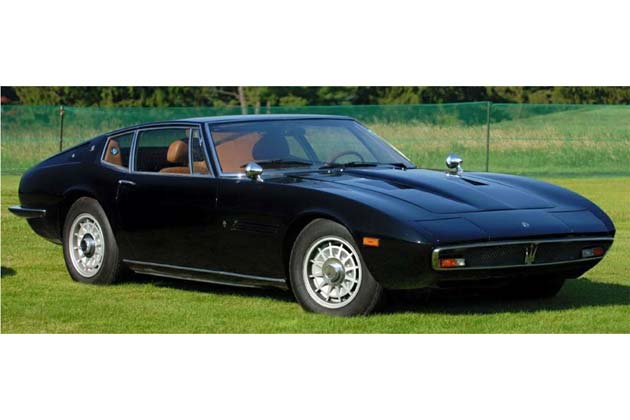
First revealed as a two-seater prototype in late 1966, the Ghibli featured the ever popular pop-up headlights and a long, low profile. The Ghibli was considered a masterful, cutting edge, ultra-fast, and luxurious Italian pony car. Sports Car International, an American car magazine, even named the Ghibli as it’s number nine pick on the list of Top Sports Cars of the 1960s.
Toyota 2000GT
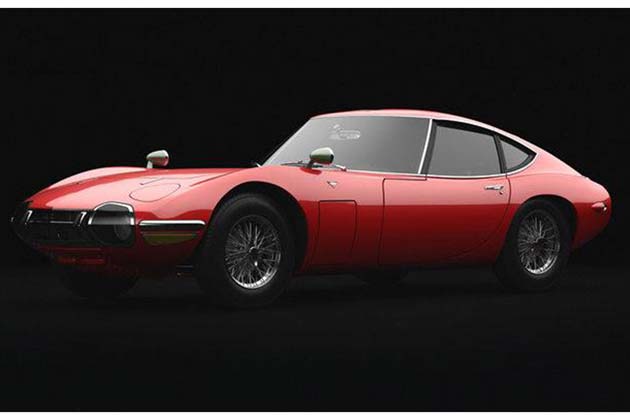
Making its big debut in 1965, the 2000GT was a Toyota and Yamaha collaboration. This little car single-handedly changed the auto world’s opinion on Japan as the two showed off that Japan could produce a sports car that was easily on the same level as those made elsewhere.
Ferrari Daytona
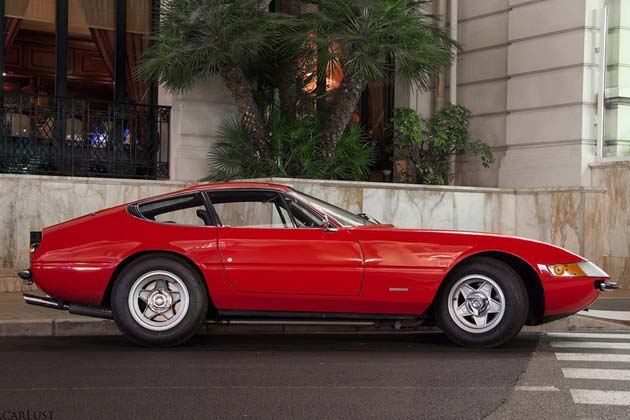
The Ferrari Daytona is the originator of the F/R GT cars that the company is known for. Originally dubbed the 365 GTB/4, this classic car became known as the Daytona after Ferrari swept the podium at the 1967 24 Hours of Daytona. Afterward, it just kind of stuck after that.
Mercury Cougar

Back in America, Mercury released their first pony car and became 1967’s Motor Trend's Car of the Year in 1967. This car was a trendsetter with features like a full-width divided grille and hidden headlamps. This car screamed tough. The Cougar revved life into the muscle car market of the ‘60s, and people still appreciate the cars tough appearance today.
Chevrolet Impala

The 1961 Impala was Chevy’s full-size styling debut for the new decade, with cleaner lines on their cars and a “bubble back” roof. This marked the third generation of the Impalas, which received Chevy’s largest engines. That made this car a drag racing warrior. This car was also repopularized by the hit TV show Supernatural, which showcased a 1969 Impala driven by the two main characters.
Porsche 911
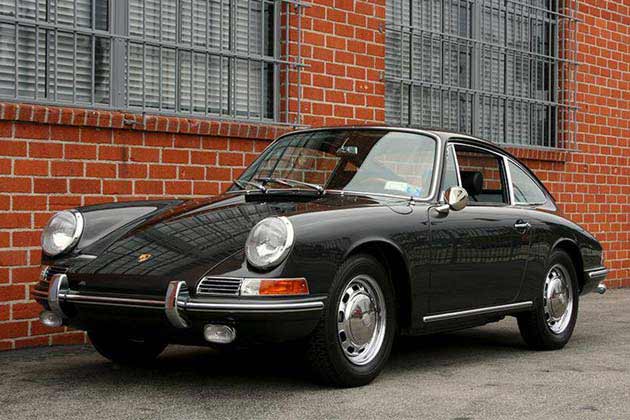
The second model produced by the Porsche company, but it became their winning horse. Larger and more powerful than the Porsche 356, the 911 went on to become an automotive legend and icon. Released in 1964, the 911 was known for its beauty and great handling. The 911 is even still in production today and has undergone continuous development, but the basic concept has remained the same.
BMC Mini
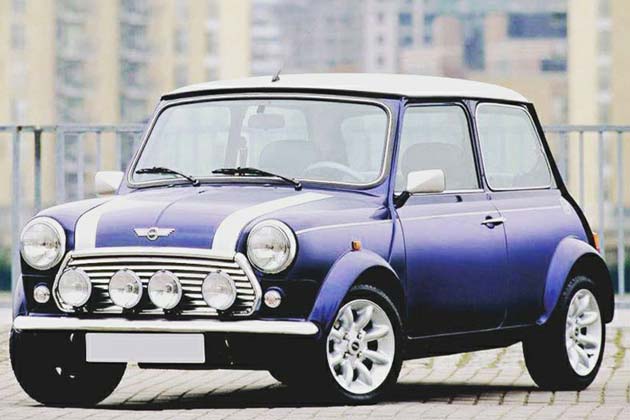
Tiny cars were a big thing in the ‘60s between the Mini and the VW Beetle, and both became icons for the era. BMC Mini’s left lasting impressions on everyone who drove them for its four decades of production.
Shelby Cobra

One of the coolest cars in auto history, the Shelby Cobra is the culmination of Carroll Shelby’s dream. A big American V8 engine dropped into a tiny British sports car that became ingrained in car culture. Powerful and lightweight, the Cobra debuted in 1962 and became a legend in the automotive industry.
Datsun 24oz

Another Japanese icon that changed the game, the Datsun is a three-door coupe that helped the Toyota 2000GT redirect Western attention to the East. Coming at the tail end of the century, the 1969 debut of the Datsun 24oz appealed to those looking to get away from the overly-large and loud Western cars. With a sleek body style, great performance, and affordable price, the 24oz gained a major following after its announcement.
Pontiac Firebird

Introduced in 1967, the Firebirds coke bottle design was an instant hit among buyers. With more even weight distribution that led to better handling, and added traction bars to help with acceleration, this car was billed as a “Family Sportster.” The Pontiac was the car that righted most of the many wrongs that its cousin, the Camaro, dealt with. It may not have sold as well as the Camaro, but it still became an icon in the latter part of the ‘60s.
AMC Javelin
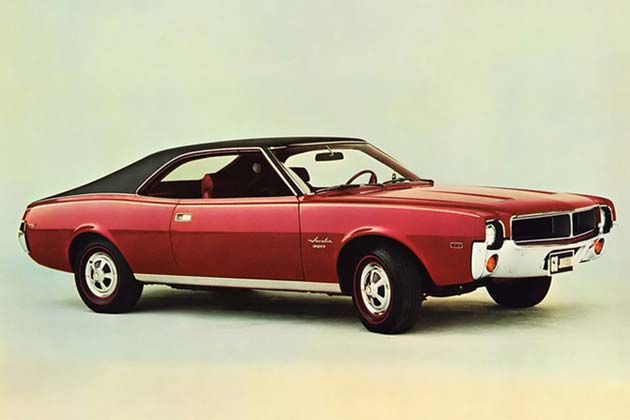
Another muscle car, but a little more unusual than the others on this list. The first generation of Javelins rolled off the presses in 1968 and was AMC’s attempt at marketing a coupe against the heard of pony cars that had flooded the market. Turns out, the Javelin was a worthy competitor to many of the big muscle cars of the time. Comfortable packaging with more interior and luggage space than the vast majority of its rivals, plus great handling and performance, made this car a force to be reckoned with.
 Author
Payton Turner
Last Updated: March 28, 2025
Author
Payton Turner
Last Updated: March 28, 2025